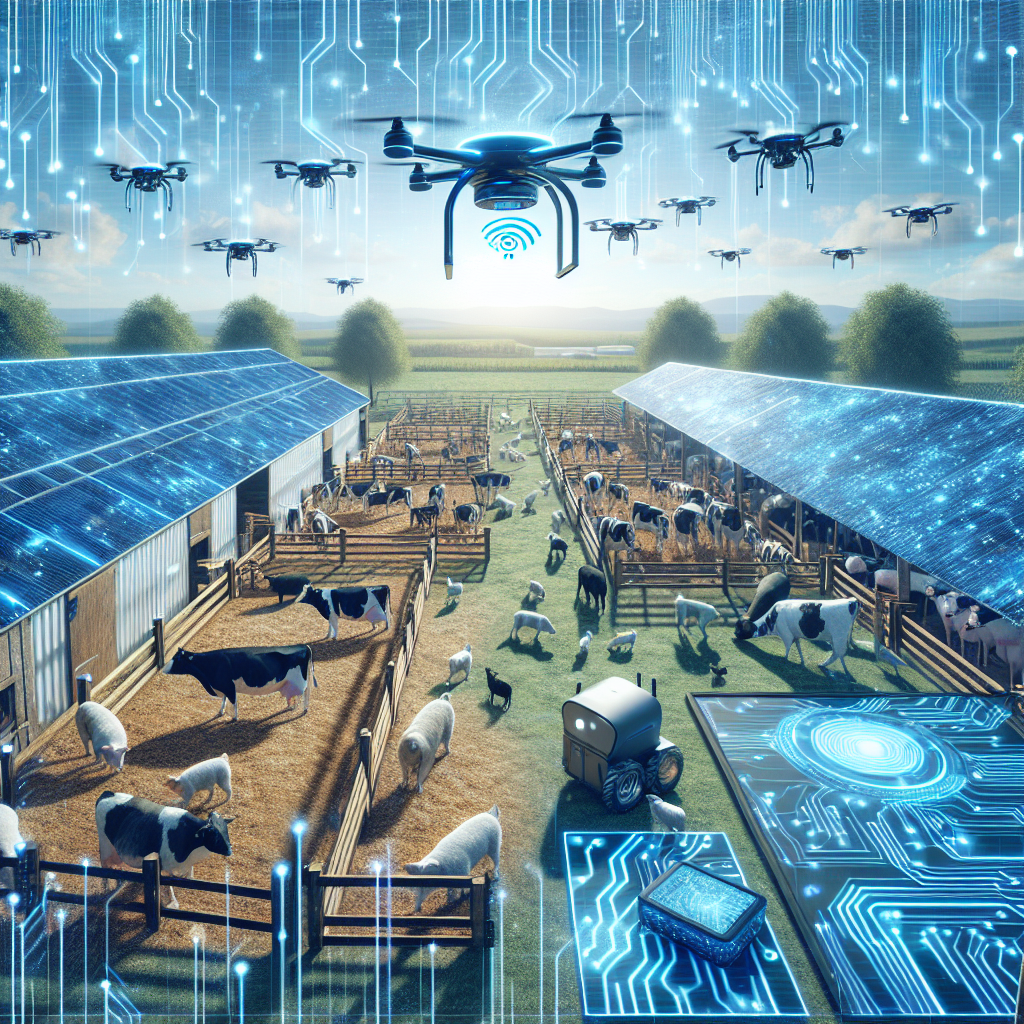Leveraging AI for Livestock Welfare Monitoring
Livestock welfare monitoring is an important aspect of animal agriculture, ensuring that animals are treated humanely and are kept in optimal conditions for their health and well-being. Traditionally, monitoring livestock welfare has been a labor-intensive and time-consuming process, requiring farmers to visually inspect animals and observe their behavior to assess their well-being. However, with the advancement of technology, particularly artificial intelligence (AI), farmers now have access to tools that can help them monitor livestock welfare more effectively and efficiently.
AI technology has the potential to revolutionize livestock welfare monitoring by providing farmers with real-time insights into the health and well-being of their animals. By leveraging AI-powered systems, farmers can track key indicators of livestock welfare, such as body condition, behavior, and health status, and quickly identify any signs of distress or illness. This allows farmers to take proactive measures to address any issues and ensure the overall well-being of their animals.
One of the key benefits of using AI for livestock welfare monitoring is the ability to collect and analyze large amounts of data quickly and accurately. AI algorithms can process data from various sources, such as sensors, cameras, and wearable devices, to monitor the condition of individual animals and detect any abnormalities or patterns that may indicate a problem. This real-time monitoring allows farmers to intervene promptly and prevent potential welfare issues before they escalate.
Another advantage of AI-powered livestock welfare monitoring is the ability to automate certain tasks, such as tracking animal movements, feeding patterns, and health records. This automation reduces the burden on farmers and allows them to focus on other aspects of animal care and management. Additionally, AI systems can provide farmers with valuable insights and recommendations for improving animal welfare practices, such as adjusting feeding schedules, implementing environmental enrichment, or addressing potential health risks.
Furthermore, AI technology can also help farmers improve their decision-making processes by providing them with predictive analytics and forecasting capabilities. By analyzing historical data and trends, AI algorithms can predict potential welfare issues and recommend preventive measures to mitigate risks. This proactive approach not only benefits the animals but also helps farmers optimize their operations and improve productivity.
In addition to monitoring livestock welfare, AI technology can also be used to enhance other aspects of animal agriculture, such as disease detection, genetic selection, and feed efficiency. By integrating AI-powered systems into their operations, farmers can improve overall animal health and performance, reduce costs, and increase profitability.
Overall, leveraging AI for livestock welfare monitoring offers numerous benefits for farmers, animals, and the agricultural industry as a whole. By harnessing the power of AI technology, farmers can improve animal welfare practices, enhance productivity, and ensure sustainable and ethical practices in animal agriculture.
FAQs
Q: How does AI technology help farmers monitor livestock welfare?
A: AI technology helps farmers monitor livestock welfare by collecting and analyzing data from various sources, such as sensors, cameras, and wearable devices, to track key indicators of animal health and well-being. AI algorithms can detect abnormalities or patterns that may indicate a problem and provide real-time insights for proactive intervention.
Q: What are the benefits of using AI for livestock welfare monitoring?
A: The benefits of using AI for livestock welfare monitoring include improved accuracy and efficiency in monitoring animal welfare, automation of certain tasks, such as tracking animal movements and health records, proactive intervention to prevent welfare issues, and predictive analytics for better decision-making.
Q: How can farmers integrate AI technology into their livestock operations?
A: Farmers can integrate AI technology into their livestock operations by investing in AI-powered systems and devices, such as sensors, cameras, and wearable devices, that can collect and analyze data on animal health and behavior. They can also work with AI technology providers to customize solutions for their specific needs and requirements.
Q: What are some examples of AI applications for livestock welfare monitoring?
A: Some examples of AI applications for livestock welfare monitoring include body condition scoring systems that use image analysis to assess animal health, behavior monitoring systems that track animal movements and interactions, and health monitoring systems that detect signs of illness or distress in animals.
Q: How can AI technology help farmers improve animal welfare practices?
A: AI technology can help farmers improve animal welfare practices by providing real-time insights into animal health and behavior, automating certain tasks related to monitoring and management, and offering predictive analytics and recommendations for preventive measures to enhance animal well-being.

